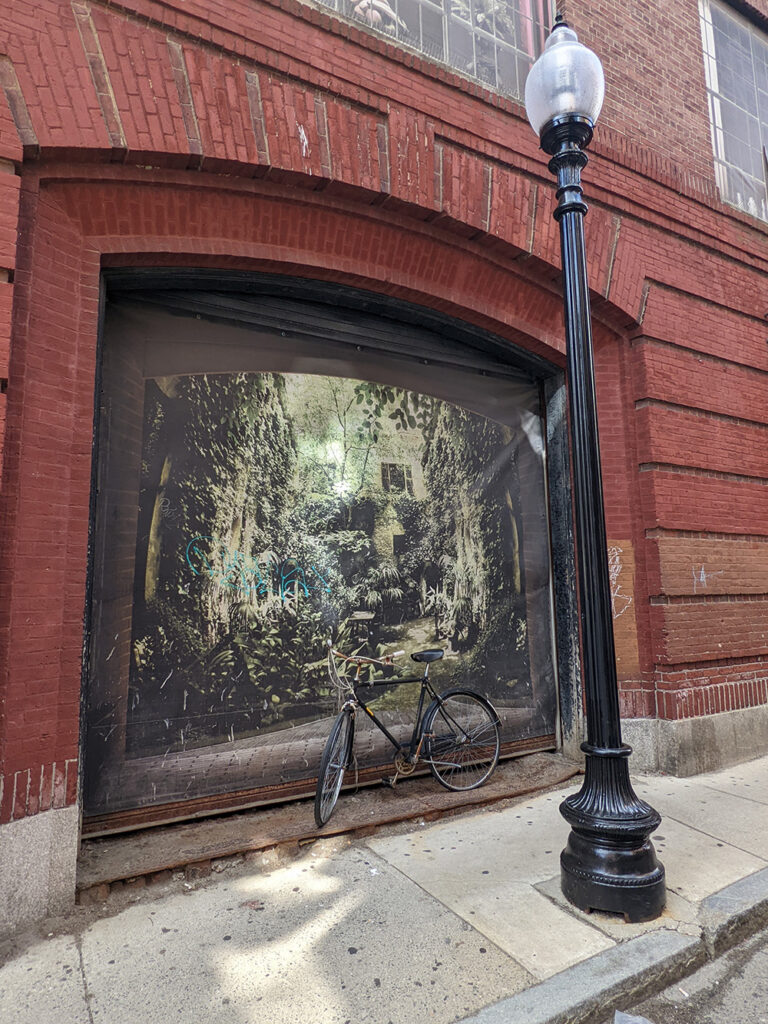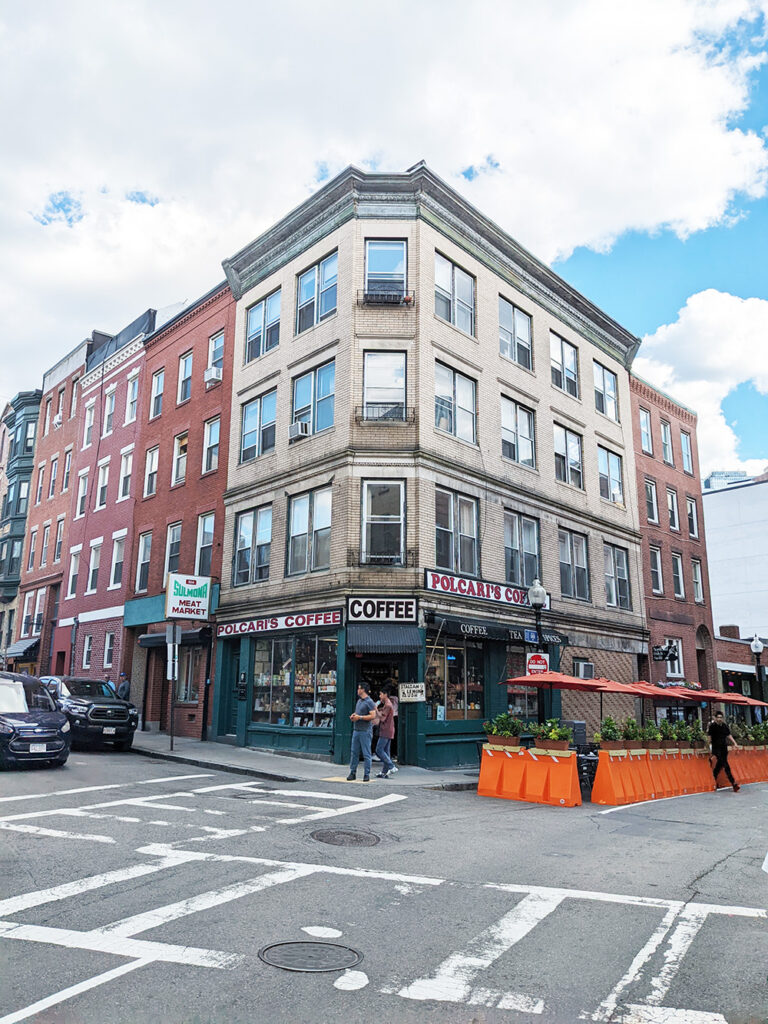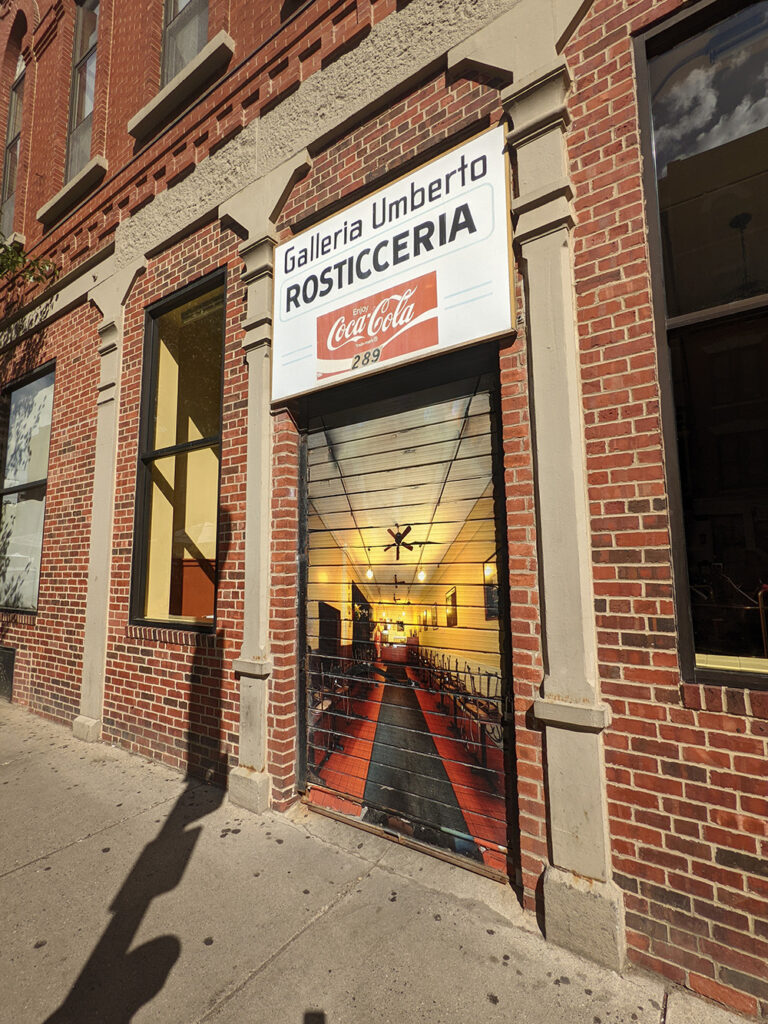When Melissa A Watkins moved back to the US, she chose Boston, a city deeply woven into American history. But she wasn’t content with the story that Boston tries to tell, she wanted to see behind the veil — the Boston beyond the myth.
I left America 15 years ago. I never intended to come back. After 15 years in Europe and Asia, I became so accustomed to things like affordable health care and reliable public transportation that the comparative merits of police violence and fundamentalist Christianity lost their luster. While I was gone, America changed. The more it changed, the more confused and angry and frustrated I became.
But despite that, America is still my home, the place where, to paraphrase Robert Frost, they have to take me in when I have to go there. In 2021, I decided it was time to return and see what was happening to my country up front.
I choose Boston as my point of return. I wish I could say there was a logical reason, like a job or a romance, but the truth is, I decided if I was going to go back to America, I was going to go back to America. In the movies, America is New York or LA, but in the history books that nerdy elder millennials were forced to read as kids, America is Boston, and so there I went.
I’m not from there, of course. I’d visited the city twice before on long layovers and managed to hate it both times. All I’d gotten to know of the place was Irish-Italians, Fenway Park and sharp, nasal accents. Oh, and apparently, it’s the birthplace of American history, at least the parts that begin with British colonization.
I’m from Denver. I’m also Black. Boston is full of history, but it doesn’t feel like mine. Every other block there’s a giant statue of a guy who fought in the Revolution but also owned slaves. Every white Bostonian I meet immediately tells me whether they’re Irish or Italian, not realizing that they probably wouldn’t get a warm welcome in either country (I’ve been to both, and the key word in Europe is American. Nobody in Europe cares where your grandmother was from unless they’re her.). I don’t expect I’ll get a warm welcome here. That, to me, seems like the standard for whatever America’s becoming. But not only is home the place that has to take me in, it’s the place I have to go, sometimes.
I’m from Denver. I’m also Black. Boston is full of history, but it doesn’t feel like mine. Every other block there’s a giant statue of a guy who fought in the Revolution but also owned slaves.
I decide that my approach to understanding Boston will be the same as it has been in many other cities across the globe. Basically, I’m going to make friends. There’s nothing better than having a local show you what makes their life great. It worked for me in Ubud, in Vilnius, in Ulaanbaatar.
It eventually works in Boston. My new friend’s name is Tristan, and he’s a historian, an anthropologist, an Irish guy with a Spanish surname who speaks fluent Cantonese.
Like most people that are interesting, he’s a teacher. So am I. He leaves a few too many “r”’s off of his words in casual conversation in the break room and with every broad ‘a’ sound, I can see my way into understanding the city opening up. I ask him what’s good to do in Boston, if he knows what the deal is with all of the colonial statues everywhere, and why Dunkin’ Donuts has such a stranglehold on the local coffee market.
He blinks his big blue eyes at me, then tells me he can just show me around if I want to know so much. Suddenly, I’m glad to be back in America again.

The first thing Tristan tells me is that Boston is a city that doesn’t really know what it is. He calls it a place of imagined history. To the tourists of the world, it’s a place of history and prestige with a little fun on the side. In reality, it’s a former company town that is defined by the constant struggle of different groups of people to settle down and belong to a place that isn’t really theirs. Because of its position in American legend, the Boston that exists now is just as much myth as metropolis.
I’ve already done some of the normal tourist things on my own. I’ve seen the harbor, the sports venues, and the museums. I’ve gone up to Cambridge, which is where two of Boston’s most famous places — Harvard and MIT — actually are. All of these places are nice, but a little too manicured to connect to.
So, when Tristan asks me what I want to see in Boston, I tell him that I want to see the places that are real, not imagined. We walk the city for hours on two separate occasions. A few places in particular stand out.
The first is in Boston Chinatown.
Thirty years ago, Washington Street, which runs through Chinatown and across the city, was considered the worst area in the Northeast. Locals knew it as the “Combat Zone,” a notorious red-light district.

Right in the heart of it is an old grocery store with a sign in the window spelling out Jia Ho in English and Chinese characters. Above it is a place called Empire Garden. For a little over 90 years, it was a theater —first for vaudeville, then for films. In 1995 it was turned into a lavish dim sum restaurant. On weekends it’s packed, filled mostly with visiting Chinese families and Asian-American locals, as well as Bostonians of other backgrounds with good taste in dumplings. The place is beautiful — the tables are all set out on the old mezzanine and the kitchen is hidden away somewhere in the walls, like in most Boston restaurants. The domed, vaulted ceiling is painted with clouds and eating here feels far removed from the city streets below.
Empire Garden has a character to it that is uniquely Chinese and American. It wouldn’t fit in anywhere I’ve been in the Chinese world. It doesn’t quite fit in America either according to some. But it occupies a space that combines the two wonderfully well, and the food is delicious, to boot.
It’s also very Bostonian. There’s a clear effort here to preserve a gilded, cloud-topped history. In Empire Garden, there’s never been a combat zone.
We leave Chinatown and head towards the North End. Boston is definitely a walking city. If you’re willing to wear good shoes and wander you can get to know it well, quickly. Walking is the only way to really see where we’re going, in this case. The North End has narrow streets and is tricky to drive in, by design. If you turn the wrong way, you’ll wind up having to leave the neighborhood and get on the highway to get back to where you started.
This is part of the well-kept, old-fashioned look of the area, due to its historical status in the city. There are no Starbucks or Dunkin’ Donuts in the neighborhood, and when I point that out, Tristan wonders if that level of preservation will ever be expanded to Chinatown or historically Black Roxbury.
The North End is a very Italian community, but specifically Italian-American. Unlike a lot of other places in Boston, it’s more or less what it says it is.
It’s an Italian neighborhood, but a large portion of it is dedicated to a long-dead son of a Frenchman, Paul Revere. A statue of him stands in the Paul Revere Mall, right in the center of the neighborhood. At the far end of the mall is the North Church, where Revere famously kept watch for “one if by land, two if by sea” if Longfellow can be believed. In between Paul and the church where he got the signal to start the Revolution, there’s a joint memorial for local veterans of the Korean and Vietnam Wars tucked into a corner.
There’s a similar, but much larger memorial for Korea and Vietnam a few miles away, near the famous Fenway park. I ask Tristan if he knows why these war memorials are in pairs and why the Korean side is better kept in both places, but someone else answers. There’s an elderly man walking up the stairs towards the church behind us and he throws a glance and a sentence over his shoulder, pausing at the top to make sure we’ve heard him.
“Because,” he says, “One of those wars wasn’t popular.”
It’s news to me that either of them were, but this is just another piece of the view of American history that Boston represents, another reminder that what is remembered and what is taught are often not the same.

When you get deeper into the North End, things look less preserved and more lived-in. A lot of the places tourists are told to go in Boston look a bit artificial, like the plastic cover was taken off before company came over. The North End, however, is much more comfortable, like the couch the whole family piles onto to watch the game. This shows best in a place called Polcari’s.
It’s a dusty coffee shop that first opened in the 1930s. Sweets and spices in jars line the shelves, and everything is carefully labeled in blocky black marker. There are old books displayed in the windows that were clearly printed a few decades ago and have the campy illustrated covers to prove it. A hand-lettered sign advertising Italian lemon slush hangs on the open front door. The newest thing inside, or at least the best-kept, is a shiny espresso machine. It’s not crowded, but there’s a steady line of customers the entire time we’re in there, all buying small things — a packet of licorice, a few ounces of oregano, a coffee, a box of tea.
Around the corner is Galleria Umberto, a tiny hole-in-the-wall Italian joint. It’s not quite as old as Polcari’s, but it’s just as genuine. There’s no frills, no imaginary history, no performances for the tourists. There’s just startlingly cheap eats, long lines, and quick service. Their pizza is good and costs two bucks, even in this economy. Their arancini, washed down with a cheap local beer, is better. Munching on a slice and an arancini while perched at a wood-topped corner table makes me feel about as Bostonian as I’ll ever get.

The last place Tristan shows me is Boston Common. Not the whole thing, of course. There’s a specific monument he wants to show me, because I’ve finally gotten frustrated and asked him, point blank: “Where are all the Black people in this town?”
I’m Black, of course, but that doesn’t make me qualified to speak on, or understand Blackness in Boston because I’m not from here. What we hear in the rest of the country is that Boston is racist. What you hear in Boston is that it isn’t: the city is liberal and open and was a stop on the Underground Railroad long ago. What you see is a steady wave of gentrification and erasure. I live across the street from a busy construction site that used to be the Harriet Tubman Center, in an area that used to be all Black. Now it’s all white, and the local who tells me about the old Tubman Center is tickled by my presence. He calls me a Black gentrifier, which I guess I am, unintentionally.
Leaving was surprisingly easy. Coming back is hard.
I’m not qualified to speak on Blackness in Boston, but the ingrained segregation of the city is one of the first things I notice when I arrive. As Black people in the US have been saying since forever, there’s a deep structural racism throughout America that manifests in separation and ignorance long before it gets to violence. That makes it all the harder to combat.
It’s with this in mind that I follow Tristan to the corner of Boston Common directly across from the Massachusetts State House. Facing the street is a memorial to Robert Gould Shaw, the guy Matthew Broderick played in the film Glory. Shaw famously led the first battalion of Black soldiers into combat during the Civil War.
The memorial is awful. During the Movement for Black Lives protests in 2020, it was defaced with red paint and flour. Even though the paint is gone now, I think that it must have been an improvement.
The main frieze of the memorial depicts Shaw, large and proud in bronze, surrounded by a crowd of marching Black soldiers, all of whom seem to be nameless and story-less. The text underneath only describes Shaw.
It’s not until you walk around and down to look at the lowest point of the monument’s back that you see the names of those Black soldiers, carved into the stone. There are precious few identifying details, and unlike Shaw, they don’t get any poetry. The monument was cast and installed in 1897. The names of the Black soldiers weren’t added until 1981.
In its defense, showing Black men in any sort of heroic light was quite progressive at the time. By all accounts, Gould was a decent guy, and even a hero. But he wasn’t the only hero, just the one who fit the imagined history of the war.
The memorial doesn’t end my tour of Boston or define my entire experience of the city. But it does remind me that even though I came home to see what was really happening in my country, there’s no way to guarantee that what I’m seeing now is the whole story, even if I am where so much of it began.
Later, in my Black, gentrified, Boston apartment, I spend a little time thinking of what I’ve seen and learned. Tristan left me with a few parting words about how much he and every other locally-bred Bostonian want to leave and find their fortunes elsewhere, but it’s clear that he loves the city, especially in the places like Polcari’s where reality pokes through the mythical veil. I’m not sure I’ll ever have that love.
In fact, I’m not sure I’ve ever had that love for any part of America, not even my own hometown. Leaving was surprisingly easy. Coming back is hard. My tour of the city in all its historically significant glory hasn’t convinced me that it’s a place I should plan on committing to long-term, and hasn’t given me the best of impressions of the country I’ve returned to.
Whether or not I should stay in Boston or by extension in America is not a decision I’ve come to yet, and what I’ve seen so far leaves me with far more questions than answers. Should I choose to stay, I’ll have to do what works for the people who seem to understand this place best do; focus on the metropolis, and criticize the myth.
